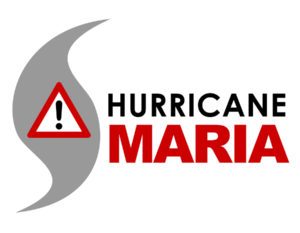

 Catastrophe modeling firms are beginning to issue preliminary estimates of the insured losses left in Hurricane Maria’s wake.
Catastrophe modeling firms are beginning to issue preliminary estimates of the insured losses left in Hurricane Maria’s wake.
RMS Said Insured Losses Could Have Been Worse
RMS predicted that the insured losses caused by the mid-September storm will hit between $15 billion and $30 billion. The firm builds the number based on insured losses caused by wind, storm surge and inland flood damage across the Caribbean. Puerto Rico and Dominica suffered the most destruction, the firm noted.
RMS also argues that it could have been much worse, pointing out that there is more than $500 billion of exposure on Puerto Rico but much of the property damage is uninsured.
“This will limit industry losses,” RMS said in its release.
Most of Puerto Rico was left without power a week after the storm made land there on Sept. 20. Drinking water, gas and other essential supplies also remain in short supply.
Additionally, based on conversations with insurers on Puerto Rico, RMS determined that the most catastrophic hits may have hit in areas with “very low insurance coverage.” Because of this, RMS said that insured losses with Hurricane Maria could be much lower than overall economic damages, which could be as much as $30 billion to $60 billion Caribbean-wide.
Karen Clark & Co. Issues Targeted Loss Estimate
Karen Clark & Co. issued an estimate using a single number rather than a range: $30 billion of insured losses for Hurricane Maria for the Caribbean, with the bulk (more than $28 billion) coming from Puerto Rico. Estimates here include wind losses to residential, commercial and industrial property. Also, KCC said that modeled property losses were boosted by 20 percent to address auto losses, insured flood damage and additional demand surge.
KCC noted that Maria was the strongest hurricane to make landfall in Puerto Rico since the San Felipe II Hurricane in 1928, and the first major hurricane since Hurricane Hugo in 1989.
AIR Worldwide Estimate Includes Many Factors
AIR Worldwide, meanwhile, estimated industry insured losses for Hurricane Maria in the Caribbean will hit between $40 billion and $85 billion, with Puerto Rico alone counting for more than 85 percent of the loss.
The AIR Worldwide modeled insured loss estimate includes physical damage to onshore property (residential, commercial and industrial), and autos due to wind and precipitation-induced flooding. It also factors in insured loss to contents, business interruption losses, losses to industrial facilities and added living expenses for residential claims.
Additionally, the AIR Worldwide estimate includes demand surge, which it defines as the increased in the cost of labor and materials that typically happens in the aftermath of major catastrophes.
What’s more, this cost surge can get worse if there are other disasters within the same timeframe, as is the case with Hurricanes Harvey and Irma, AIR Worldwide noted.
AIR’s estimates do not include elements such as losses to infrastructure, losses from hazardous waste cleanup, vandalism, or losses to offshore properties, pleasure boats and marine craft.
AIR Worldwide is owned by Verisk Analytics.
Sources: RMS, Karen Clark & Co., AIR Worldwide